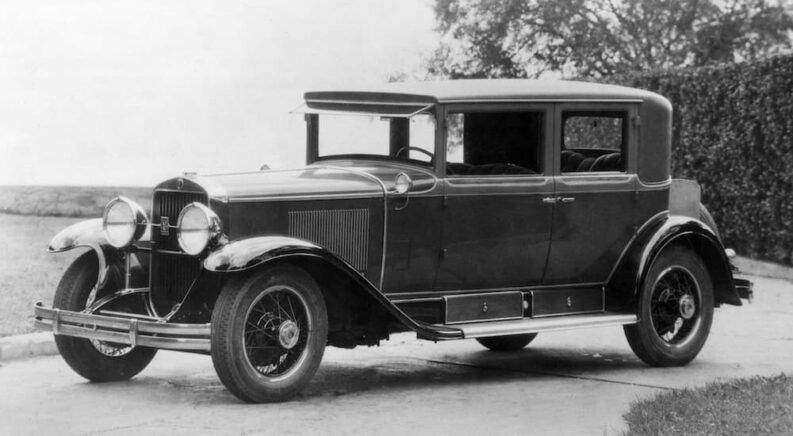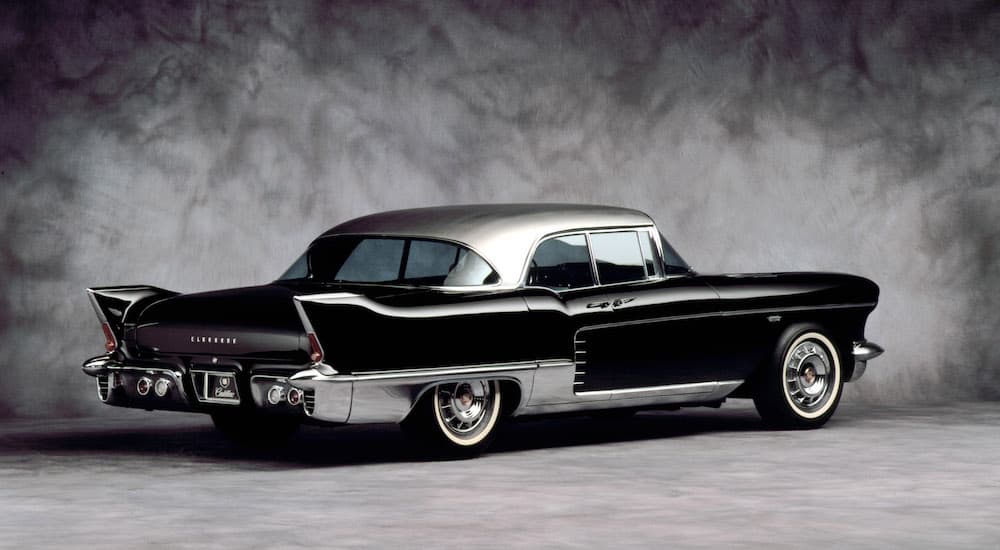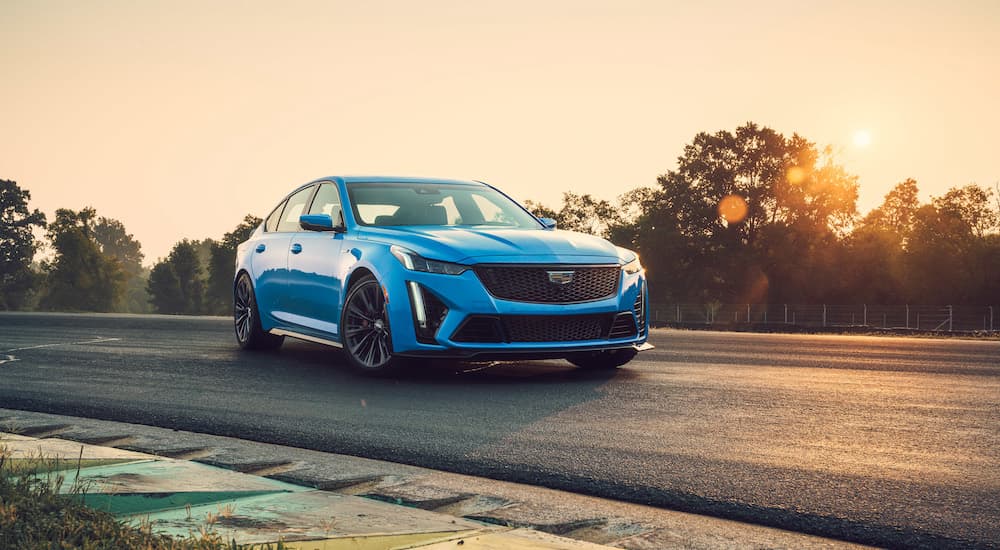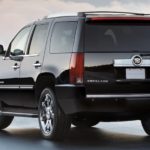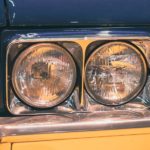In the United States, few dealers have made quite a name for themselves in the way that Cadillac has. Since the dawn of the 1900s, Cadillac has set itself apart as one of the leading producers of luxury vehicles, carving its own path with bold innovation and unmatched style and class. Cadillac has been American made since the very beginning, and today there are over 500 Cadillac dealers across the country, which means the Cadillac influence reaches every corner of this great nation. Throughout the history of the automotive industry, not only in the US but throughout the whole world, very few manufacturers have provided consumers with such a litany of legendary and iconic vehicles, many of which serve as the encapsulation of a generation, the very spirit of what it was to be living in those times.
Cadillac is a staple not only in American automotives but also in American culture in general. Coming on the scene at the advent of consumer-available cars, Cadillac burst into the industry with a boldness and flair that is as brilliant as it is fun to look at and brought some of the most essential and game-changing innovations. As a matter of fact, it’s thanks to Cadillac that automobiles feature some of the commonplace features we don’t even think about today. Furthermore, it’s thanks to Cadillac that vehicles are even produced the way they are in the modern world. Why is this? Well, let’s take a look and find out.
In the Beginning
The dawn of the 20th century offered the promise of new and daring technologies. The technological revolution that this time was marked by gave birth to some of the greatest feats of machinery the world had ever seen, providing the base blueprints for technologies that would be refined over time into what we recognize today. This is especially true for the automotive industry, as the early 1900s served as a time in which the automobile was gaining traction in terms of being a viable form of transportation for the common person. Fascinatingly enough, the point at which the Cadillac story begins is actually roughly twenty years after the creation of the first car, which occurred in 1886. Though primitive in nature when compared to the vehicles that would hit the scene even by the time the ’50s rolled around, it is certainly fascinating that the earliest vehicles predate the 1900s! But anyway, back to Cadillac.
Cadillac was founded in 1902 as the manufacturer of engines for Ford motors. The company was named after the founder of Detroit, a French gentleman by the name of Antoine de la Mothe Cadillac, who established the city exactly 201 years prior. The namesake was decided on by the company’s founder, Henry M. Leland, who felt that prestige and luxury could be associated with the Cadillac name. As the Cadillac brand began making its own vehicle models, Leland’s mission was to create automobiles that delivered on both of those ideals, and the Cadillac name quickly became synonymous with luxury and innovation.
It could be argued that in the company’s infancy, innovation was even more at the forefront than luxury, though it certainly was not lacking in that field. Cadillac was the first company to use replaceable parts in their vehicles, which made producing the vehicles far more efficient and servicing them at Cadillac dealers equally so. The concept of replaceable parts paved the way for streamlined mass production of vehicles that changed the automotive industry.
In 1909, Cadillac was purchased by General Motors, having proven themselves, even in their infancy, to be at the forefront of innovation in the industry. Many of the innovations that Cadillac coined in the early 1900s are commonplace in our vehicles today and are features that many of us in the modern age cannot imagine going without. They created the first fully enclosed car, which quickly became the standar
d for consumer vehicles, setting the standard for safety and cosmetic class. They even pioneered such technology as interior lighting in vehicles, undoubtedly a feature appreciated by those hopping into their cars at night.
Cadillac quickly made a name for itself as the leader in luxury and innovation in the early 1900s and set itself apart from other producers and dealers at the time for its efficiency and service on both the production side and the dealership side. By the 1920s, there were over 300s Cadillac dealers across the nation, a huge boom for any brand in the industry at the time.
Weathering the Story: Cadillac and the Great Depression
As we all know from history class, the early 1900s was a difficult time economically. When the Great Depression hit, automotive companies, along with countless other industries, were hit hard. In a time when people could barely afford basic necessities, selling a high-end luxury car was nigh on impossible. Throughout this time, however, General Motors did continue turning a profit for many of their vehicle brands, such as Pontiac and Buick, by slashing prices to make them more accessible.
However, the same could not be said for Cadillac, which, despite pioneering the technology for mass production, was far more difficult to make than other brands due to its standards of luxury and cost, especially in the economic climate of the ‘3
0s. This changed when Nicholas Dreystadt, a General Motors executive, came onto the scene, the man with a plan who firmly believed he could save Cadillac. Dreystadt declared that the path to making Cadillac a viable brand during this time was to focus on the dealership side of things, focusing time and resources on offering exemplary service departments and buyer experiences on that front while also focusing on making the vehicles more streamlined and faster to mass produce. On top of creating the best possible dealership experience, Dreystadt called for the prices on all Cadillacs to be drastically reduced to make luxury vehicles more affordable for the times.
Astonishingly, Dreystadts plan was an incredible success, and Cadillac sold more vehicles in 1937 than it had during its initial boom in the mid-’20s. A truly amazing feat when considering the economic state of the world during the Great Depression and a testament to the fact that the heads of Cadillac held the ideal that everyone should have the ability to have a luxury vehicle, no matter what the state of the world may be.
The Golden Age
When the ’50s and ’60s rolled around, Cadillac had a reputation for providing vehicles and services in a league of their own. Between these two decades, they produced some of the finest and most recognizable cars ever made. Dreystadt’s ideas for making Cadillacs more accessible to all were further realized beyond depression-era America, and dealerships were located in downtown areas and just off of major highways so that the ability to look at and purchase a Cadillac wasn’t just available to the secluded upper echelons of wealthy people, they were accessible to everyone.
During this time, some of the most iconic and distinct vehicles ever made burst onto the scene with flair and flamboyance. Such era-defining vehicles as the Cadillac Eldorado, Coupe De Ville, Lasalle, and many others set the bar for bold cosmetics and high-end performance. The very image of these vehicles now serve as encapsulations of this era of American history. The sharp, defined tailfins and unmistakable front headlights and grille gave these vehicles personalities the likes of which the automotive industry had never seen before. In the ’50s and ’60s, Cadillac did more than offer the perfect balance between luxury, innovation, and performance; they created icons that defined the spirit of this time in history.
The ’80s and the Need for Change
Time went on, and Cadillac continued to define the automotive industry with its distinct vehicles and unmatched dealerships, both from a shopping and service perspective. But up until the ’90s, Cadillac vehicles, though top-notch in luxury, were, admittedly, large, gas-guzzling cars. Times had changed, and though the innovations that Cadillac offered in the early 1900s and the way in which they defined what a car dealership should be in the ’30s met the needs of the market they were in at those times, the market of the ’80s had become increasingly concerned with vehicle efficiency, possibly even more so than luxury.
Many European brands that had made their way into the American market over the years had begun making themselves strong competitors against Cadillac. Many of those brands offered vehicles that were smaller and more fuel efficient, two things that the ’80s generation, which was facing an even more distinct technological revolution than that of the early 1900s, were incredibly interested in. The modern world was different now. Different than it had been in 1902. And when reviewing what they had to offer, it was clear to the minds at Cadillac that it was starting to lag behind in terms of what this modern world wanted. But innovation and adaptability was no stranger to the Cadillac brand, so everyone got to work on revamping everything about the brand.
For starters, Cadillac made it a top priority to produce some of the most compact and fuel-efficient vehicles on the market, and that’s exactly what it did. Not only did it offer its own unbeatably efficient compact cars, but it made fuel-efficient compact cars that came with the luxury and flair that was par for the course for any Cadillac, making it markedly distinct from any and all other vehicles on the market in itself. From there, Cadillac went on to overhaul its dealership image from the ground up, making sure to make it clear to those watching them that its commitment to efficiency was on par with its commitment to luxury. The Cadillacs of the ’80s, Eldorado, Seville, and Deville alike, were sleek, compact, efficient, and incredible to look at, defining this time in history similar to how they did in the ’50s and ’60s.
Cadillac proved, especially on the dealership front, that they were more than a tried-and-true American tradition. They were a company that produced modern cars for the modern world, offering vehicles that were the pinnacle of efficiency as well as style.
Cadillac Today
Today, Cadillac continues to be a leader in the automotive industry not only in the U.S. but around the world. Ever committed to the tenets of luxury and innovation, the brand serves as an example of how to encapsulate the spirit of an industry, a country, or even a time in history. First class in style and utility, Cadillac offers a vast array of vehicles that cater to people from all walks of life, and remains committed to the fundamentals of making top-notch class and performance available to all people, no matter what the state of the world dictates.
Cadillac dealers everywhere strive to provide an exemplary experience on both the fronts of purchasing and owning a vehicle, continuing to operate under the pretense that the customer’s happiness with the overall Cadillac experience is the most important thing. Knowledgeable staff and the highest and best vehicle service were the ideals that Nicholas Dreystadt placed above all else, and that tradition has been honored up to this very day.
The legacy of Cadillac’s early days lives on in the modern world, and luxury and innovation continue as the core of Cadillac’s operation. The traditions that the minds of yore established are honored still, informing the way in which the brand maneuvers the ever-growing, ever-changing world. The past continues to influence Cadillac as its leaders look to what the future has in store, ready to offer the same service and dedication that has made Cadillac a staple in American society, no matter what the world throws at it.

